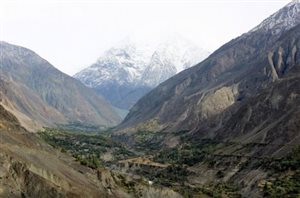Facts and Statistics

It covers approximately 35 miles with an elevation of up to 16,000 feet. Also known as the Super Inca Trail or Hidden Inca Trail is not travelled by many, and requires a tour guide. If you are looking for pristine wilderness, off beaten paths and an engaging trek, then the Ancascocha Trail is the one for you. For easier hiking and acclimatization, the trail is divided into several sections that can take you up to five days to complete.
Cusco – Soqma – Rayan

You will then hike for thirty five more minutes, and stop for lunch. This section is characterized by dry mountains with a moderate hiking difficulty. The highest altitude is 3,700 meters while the lowest altitude is 3,205 meters. Approximate distance is around 8 km, which will take you around 5 hours.
Rayan – Chancachuco – Ancashcocha

From there, you take a descent that will take an hour or so until you can find a nice spot for taking lunch. After you have taken lunch, you can decide to take a thirty-minute hike to following a narrow trail with beautiful sceneries of Mt. Veronica. Alternatively, you can take a 4-hour walk down to Ancashcocha. This is a great place for camping. Approximate walking distance is 16 km and the level of hiking is challenging.
Ancascocha – Paucarcancha

After that, you will ascend into deep greener vegetation. This section allows you clear views of the Inca Trail, as you approach Machu Picchu. Below are the Qésqua valley and the communities living there. You should pass through the Muyu Muyu community where you can buy artifacts and other items produced in the region. The highest elevation is 4,650 meters and the zone is characterized as challenging, due to the deep descents. The walking distance is 10 miles, which should take you eight hours at most.
Paucarcancha – Ayapata – Llulluchapampa
This is the section where you leave the horses and the horsemen, and meet with your porters. From Paucaranca, you will descend for 25 minutes until you reach the last village on this Inca, the Huayllabamba. From there, you will take a four-hour uphill trek that will lead you to Llulluchapampa. You will encounter many ecosystems along the way, including the cloud forest. This is an area of dry mountain and the hiking difficulty is mainly moderate.
Llulluchapampa – Pacaymayo – Chaquicocha

Another trek to the side of the valley will give you a chance to refill your water bottles. After that, you start ascending for two hours, until you reach Runcu Rancay. Here, you will see two amazing waterfalls on the opposite valley. From there, you should proceed with your descent until you arrive at another historic site, the Sayacmarca. Here, you can watch the sun, setting over the Vilcabamba mountains. This section is quite challenging. It is mainly characterized by Cloud and Andes forests.
Chaquicocha – Phuyupatamarca – Wiñay Wayna
From Chaquicocha, you will take a two-hour hike until you reach Phuyupatamarca at 12,073 ft. this location gives you astounding views Machu Picchu Mountain, Huayna Picchu Mountain and Aguas Calientes. You will then head straight to straight into the rain forests. It is a downhill trek where you can captures some of the most beautiful photos of this trail. If you prefer, you can take a guided tour of Wiñay Wayna that is the most beautiful and largest archaeological site on this trail. Some people end their hike here, since the rest of the section is easy and close to the urban areas.
What to Carry

Bottom Line
The good thing about this trail is that it can be accessed all year round. It is characterized as a challenging trail considering the hiking length and hiking altitudes. Therefore, it is best suited for advanced or experience hikers. It is advisable to acclimatize at Cusco for around three days before you can proceed with the trip.

0 comments